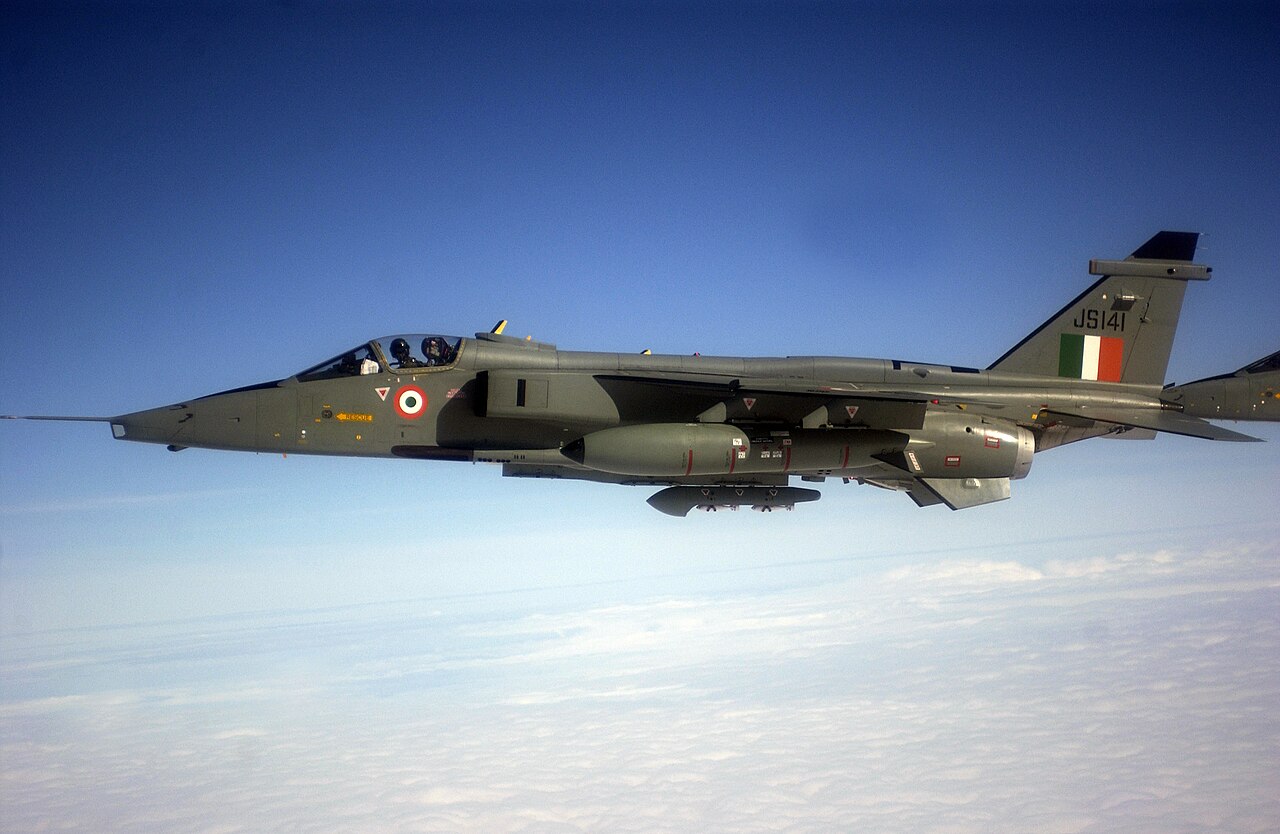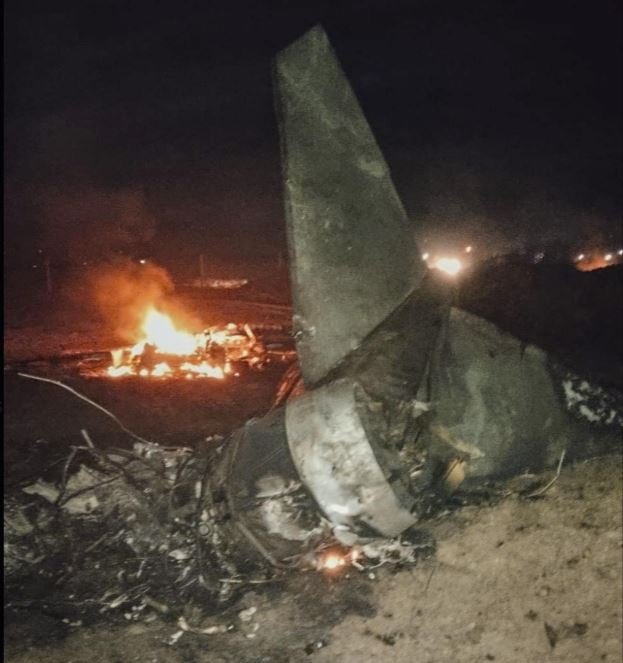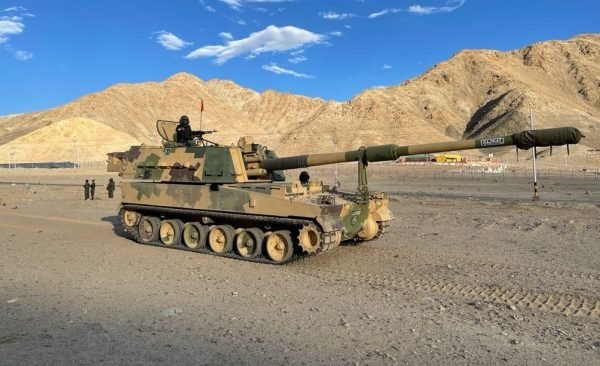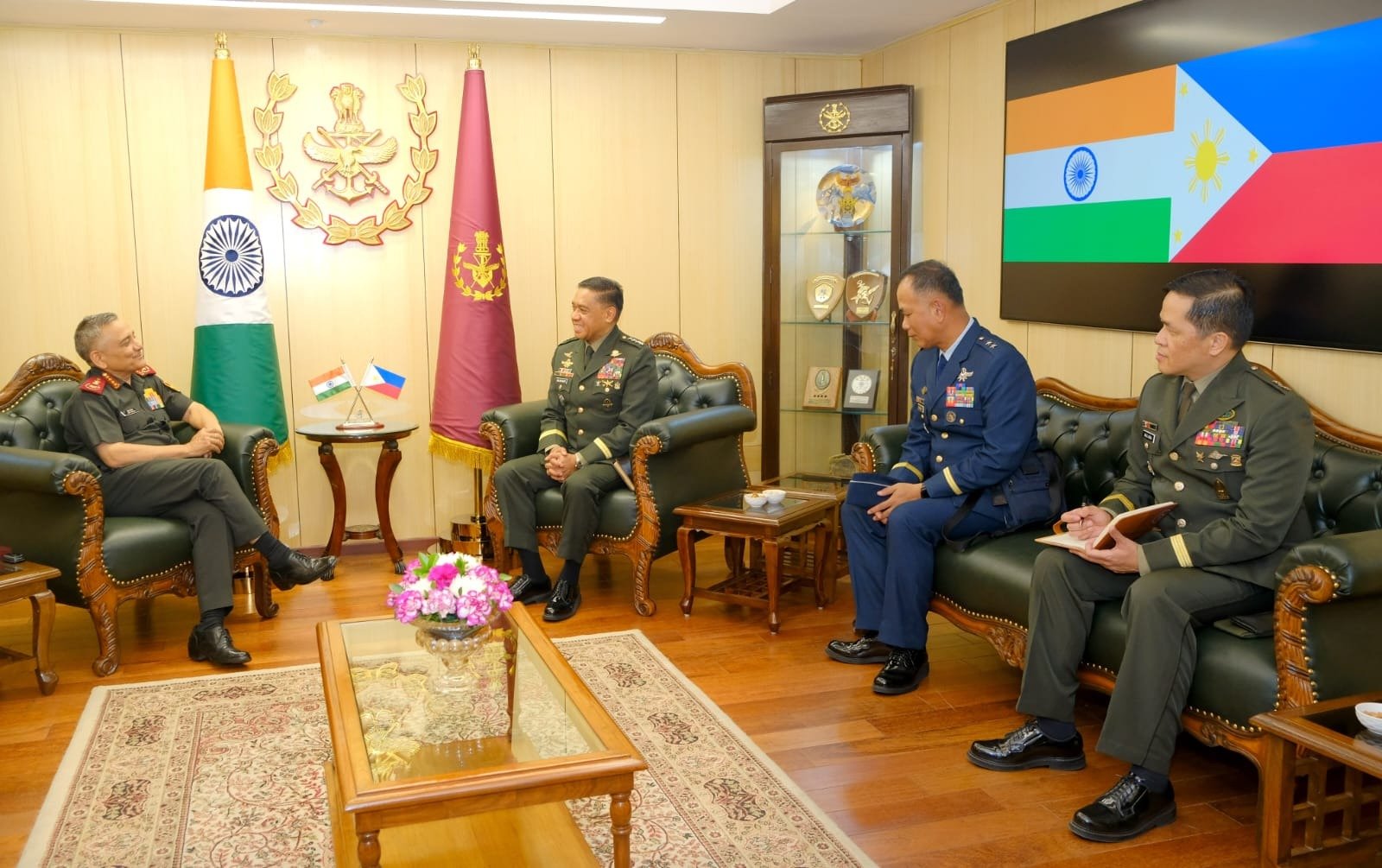The SEPECAT Jaguar, an archaic British-French supersonic fighter jet operated by the Indian Air Force (IAF), crashed on April 2. The tragedy comes as both France and Britain are zooming ahead with the development of their respective sixth-generation fighter jets, whereas India stares at a depleted squadron strength.
An IAF Jaguar twin-seater aircraft crashed at around 9:30 pm IST on April 2 during a routine training sortie. It broke into pieces and caught fire, as shown in multiple videos from the scene published on social media. Unfortunately, one of the pilots succumbed to his injuries, and the other injured pilot is currently undergoing treatment.
The Indian Air Force wrote on X: “An IAF Jaguar two-seater aircraft airborne from Jamnagar Airfield crashed during a night mission. The pilots faced a technical malfunction and initiated ejection, avoiding harm to the airfield and the local population. Unfortunately, one pilot succumbed to his injuries, while the other is receiving medical treatment at a hospital in Jamnagar.” A court of inquiry has been commissioned to investigate the crash.
This is the second such incident in less than a month attributed to an unidentified technical malfunction. Earlier, on March 7, an IAF Jaguar crashed near Ambala in Haryana while it was on a routine evening sortie.
Frequent crashes involving aging fighter jets are alarming since the service is already staring at a massive lacuna amid depleted squadron strength. The IAF currently operates 31 fighter squadrons against the sanctioned strength of 42. This is in stark contrast to its adversaries, China and Pakistan, who are rapidly adding more aircraft to their arsenals.
The IAF is now the only operator of the SEPECAT Jaguar, a low-flying, sea-skimming fighter bomber developed jointly by the UK and France. The aircraft took its first flight more than fifty years ago, in 1968, and was purchased by India in the late 1970s at a cost of about a billion dollars.
The Indian Air Force has come a long way in the decades since. In a bid to modernize and keep up with the threats of the time, the IAF acquired the French Dassault Mirage-2000 in the 1980s, followed by the Russian Su-30 in the late 1990s.
Notably, both France and Britain, which developed the Jaguar, moved at lightning speed in developing their own jets. For instance, the UK developed the Eurofighter Typhoon along with Germany, Italy, and Spain, whereas France went solo and developed the Rafale, which the IAF has also purchased.
The last of the Jaguars were retired by France in 2005 and the UK in 2007.

India, on the other hand, trailed (almost miserably) in the development and induction of its own indigenous fighter jets. The aging Jaguars in service with the IAF were originally planned to be replaced by India’s locally manufactured Tejas-Mk1 and Mk-1A. However, the painful delays over the years offset those plans.
While the IAF continues to fly the Jaguar due to the crunch in numbers, both Britain and France have zoomed ahead in developing advanced fighter jet technology and are working on producing sixth-generation combat aircraft.
The UK, along with Japan and Italy, is currently working on the Global Combat Air Program (GCAP). The sixth-gen aircraft produced under this program is expected to take its first flight by 2027 and enter production by the mid-2030s. It will replace the Eurofighter Typhoon, which is operated by the Royal Air Force.
On the other hand, France, along with Germany and Spain, is working on the Future Combat Air System (FCAS). The aircraft developed under this program are also set to enter production in the next decade. The sixth-generation fighter jet developed under FCAS will replace the French Rafale.
Meanwhile, India’s first fifth-generation aircraft will be in production by the mid-2030s, putting the country a generation behind its counterparts in the West.
More importantly, though, India plans to begin phasing out its Jaguar strike aircraft starting in 2027-2028, with the complete phase-out scheduled by 2035 or later. This means that by the time the IAF decommissioned its last Jaguar aircraft, both Britain and France would be ready to induct their sixth-generation fighter jets.
Jaguar In the IAF Are Relevant Despite Age?
The SEPECAT Jaguar has been a crucial part of the Indian Air Force (IAF), with observers even going so far as to say that the aircraft has aged like fine wine.
SEPECAT Jaguar is a supersonic attack aircraft designed for close air support and nuclear strike roles. Christened ‘Shamsher’ by the IAF, the war bird forms an important part of India’s nuclear triad and has been serving the nation for more than 45 years now.
While in an ideal scenario, the aging aircraft needs to be pulled out of service, the truth remains that their decommissioning at this stage would severely affect the IAF’s operational capability.
When the Jaguars joined the IAF in 1979, their accurate weapon aiming, attack systems, and navigation marked a significant advancement in the IAF’s existing technological capabilities. The IAF was mighty impressed by the aircraft’s dual engine, which improved its survivability and capability to operate from short, partially built airstrips.
When short-range surface-to-air missiles became common in combat, the Jaguars seemed irrelevant because they had to go higher to deliver stand-off weapons. However, the advent of long-range surface-to-air missiles made high-flying aircraft more vulnerable, making low-flying tactics relevant again to evade enemy radars.
The Jaguar, for example, remains relevant today because the IAF adopted it for medium-altitude stand-off strikes.
The Russia-Ukraine war further highlighted the importance of low-level penetration in contested airspace. For instance, to avoid detection, Ukrainian fighters fly to their standoff weapon launch positions at extremely low altitudes, below the enemy’s radar horizon. They zoom higher as they get closer to the launch location, fire their weapons, and then “hit the deck” again.

Jaguar’s “lo-lo-lo combat radius of action” is 350 nautical miles (650 kilometers), which means it can travel this distance while flying low. This is one of the highest for low-flying strike aircraft, as previously explained by the EurAsian Times.
Moreover, the aircraft has performed exceedingly well in combat despite its age. As recently as 2019, during IAF’s Balakot strikes inside Pakistan, the Jaguars played a decoy to lure the Pakistan Air Force’s F-16 away from the target. The Jaguars took off from Ambala air base and joined Su-30MKI, making a high-speed flight towards Bahawalpur, Pakistan, as decoys.
The intention was to fool the Pakistani fighters into believing that Indian fighter jets were about to attack Bahawalpur. Taking the bait, the F-16s maneuvered to halt the Jaguars. These fighters never crossed the Line of Actual Control, but it cleared the path for the Mirage fighters to breach Pakistani airspace.
Since its initial induction into the IAF in the early 1980s, the IAF, in partnership with HAL and DRDO, has continuously upgraded the Jaguar to improve its stand-off attack, strike range, and target acquisition capabilities.
The upgrades, referred to as DARIN (Display Attack Ranging Inertial Navigation) upgrades, were done in three phases – DARIN-1, DARIN-2, and DARIN-3, as explained in great detail by a former IAF Jaguar pilot, Squadron Leader Vijainder K. Thakur, in an article for the EurAsian Times.
However, under the DARIN-3 upgrade program, Honeywell F-125IN engines (27.7 kN dry thrust, 43.8 kN with afterburners) were to replace the Jaguar Adour 811 engines (25 kN dry thrust, 37.5 kN with afterburners). Nevertheless, it was determined that the cost of purchasing the US engines and having HAL install them on the Jaguars was too high. The plan has since been abandoned.
Due to wear and tear, the Jaguar’s two Rolls-Royce Turbomeca Adour Mk 811 turbofan engines are losing thrust, lowering their operational capability.
However, it has been assessed that despite their low thrust and the IAF’s lack of investment in new engines, Jaguars will still be relevant for at least the next decade.
While making the case for Jaguar’s retention, Thakur said, “Clearly, the Jaguar is a potent platform despite being somewhat underpowered. It could be retained in service longer than currently projected to prevent the unacceptable depletion of IAF fighter aircraft inventory.” However, he added, “longer service retention could only be achieved by reducing the aircraft’s monthly flying hours.”






